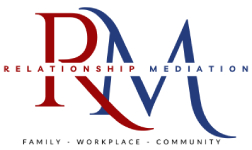A safety plan for individuals affected by domestic violence is a crucial tool to provide immediate and long-term protection and support. Here is a streamlined approach:
Safety and Timeliness
Immediate Response and Safety Plan Implementation
1. Assess Immediate Danger:
- Evaluate Immediate Risks: Law enforcement and domestic violence support services assess the immediate threat to the victim
- Emergency Protection Orders: Implement legal measures such as restraining orders or emergency protection orders to prevent further harm
2. Create a Safety Plan:
- Emergency Contacts: List emergency numbers (friends, family, shelters, police)
- Safe Locations: Identify safe places the victim can go (friends, family, shelters)
- Escape Routes: Plan and practice escape routes from the home
- Important Items: Prepare a bag with essential items (documents, money, keys, medications)
Comprehensive Evaluation and Support
1. Review Past Experiences:
- Document Past Incidents: Keep a detailed record of past violence, including dates, types, and responses.
- Coping Mechanisms: Understand how the victim coped with previous incidents and their effectiveness.
2. Support Network:
- Identify Support Systems: Determine who the victim reached out to (friends, family, support centers).
- Evaluate Support Effectiveness: Assess the effectiveness of previous support and make necessary adjustments.
3. Legal Measures:
- Discuss Legal Options: Inform the victim about available legal protections (restraining orders, custody arrangements).
- Implement Legal Protections: Work with legal professionals to enforce protections.
Future Planning and Prevention
1. Safety and Support Assessment:
- Ongoing Safety Monitoring: Regularly check on the victim’s safety and well-being.
- Access to Resources: Ensure the victim has continuous access to support services (counseling, financial aid).
2. Strategies for Future Prevention:
- Develop Long-term Strategies: Create plans for long-term safety, including changes in living arrangements and secure communication methods.
- Education and Empowerment: Provide the victim with resources and training on recognizing early signs of abuse and self-defense.
3. Safe Environment:
- Secure Living Arrangements: Help the victim find safe housing away from the abuser.
- Emotional and Psychological Support: Offer ongoing counseling and support to address trauma and promote healing.
Family and Extended Network Considerations
1. Impact on Family Members:
- Assess Family Dynamics: Evaluate how the violence has affected children, pets, and extended family members.
- Support for All Affected: Provide counseling and support services for children and other family members.
2. Rebuilding and Recovery:
- Long-term Recovery Plans: Develop plans for the victim and their family to rebuild their lives, including job training, education, and social support.
- Monitoring and Follow-up: Regularly follow up with the victim and their family to ensure they progress towards a safe and stable life.
Continuous Improvement and Community Involvement
1. Feedback and Adjustment:
- Collect Feedback: Gather input from the victim and their support network to improve the safety plan.
- Adjust Strategies: Modify the plan as needed based on feedback and changing circumstances.
2. Community Awareness:
- Educate the Community: Raise awareness about domestic violence and available resources.
- Engage Community Resources: Involve community organizations in supporting victims and preventing domestic violence.
By focusing on immediate protection, comprehensive support, and long-term strategies, a safety plan can help victims of domestic violence escape danger, rebuild their lives, and prevent future harm.
Mediation is Safe, Structured and Confidential
- Mediation provides an independent Mediation Practitioner to assist with communication during the session.
- Offers the opportunityfor the parties to develop and consider all the options.
1. Community mediation
- Joint mediation with zoom or face to face
- establish the connection
- Understanding of the issues
- What other options are available
- Safety Plans for if required
- Reporting to management
- Compliance with the terms and rules of the organisation
Making your Agreement Legally Binding
It’s important to note that an unsigned agreement reached during mediation is not legally binding. If you require a legally binding contract, seeking legal advice is necessary. Each deal is tailored to the unique circumstances of the parties involved.
In the agreement, the Family Dispute Resolution Practitioner (FDRP) (NMAS) can assist both parties in discussing more intangible items on which they disagree. These areas may include pet visitation, social media usage, or other relevant issues. Geoff encourages both parties to consult with a legal practitioner for legal advice on moving forward or consent orders, as only legal practitioners can provide legal advice.
- Issues needing to be addressed are identified and included.
- Areas where parties disagree during the mediation process are excluded as legally required.
- Upon agreement to terms by both parties, an agreement can be prepared in the correct format to satisfy the Court, which can then be sent to your lawyer for filing.
- In cases where critical issues or potential areas of disagreement arise between parties, Geoff Brayshaw, FDRP mediator, assists both parties in determining their outcomes safely and fairly.
- If you would like to book, the help and services of an experienced Family Dispute Resolution Practitioner and Mediator registered with the Attorney General’s Department.
